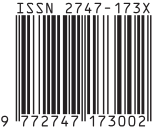High-Efficiency Dye-Sensitized Solar Cells: A Comprehensive Review
DOI:
https://doi.org/10.19184/cerimre.v5i1.31475Abstract
Keeping in mind our community's dependency on non-renewable sources of energy, it is a gravitating issue that seeks our attention and requires us to switch to renewable sources of energy at the earliest. A Dye-Sensitized Solar Cell (DSSC) is a third-generation photovoltaic technology that has immense capability to become highly commercial in a few years. Along the same lines, it is necessary to highlight that current DSSCs have shallow lifetime values, stability and performance. The efficiency of current DSSCs and the need to tackle their choice of materials and long-term stability is a concern. Some of the highest recorded efficiency values are around 12%, and this calls for severe replacement of conventional DSSC materials, modifications in the device structure and molecules, and improvement in testing and scaling-up measures. This review article underlines an introduction to DSSCs, working principle, components, high-efficiency DSSCs, strategies to improve device performance, DSSCs research in India, the advantages and disadvantages of the device, and recent research on fruit and flower-based DSSCs.
Keywords: Dye-Sensitized Solar Cells, Solar Cell Materials, Third Generation Photovoltaics, High-Efficiency Dye-Sensitized Solar Cells, Solar Cells.








